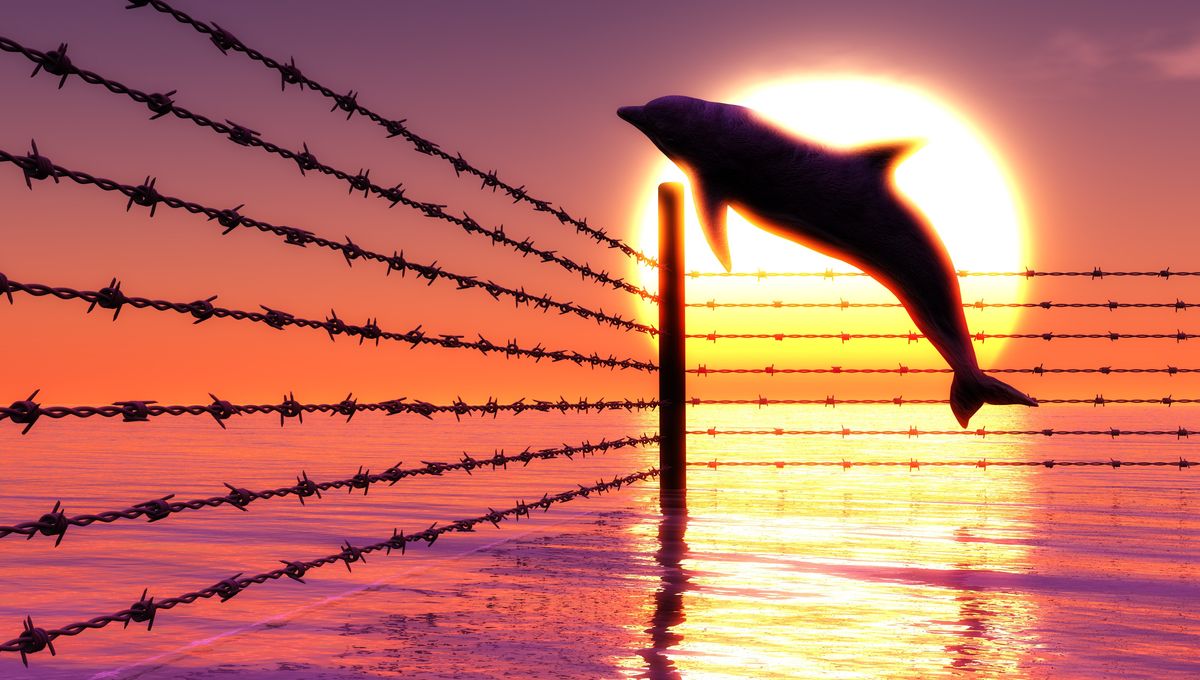Are the animals still in their pens or have they taken the opportunity to escape? One thing is certain – the pens are badly damaged.
This intriguing information was uncovered by H. I. Sutton, a journalist and open-source intelligence analyst. Sutton came across the situation while examining recent satellite images.
“A massive storm battered Crimea on November 26-27. Preliminary analysis reveals that the dolphin pens in Sevastopol harbor are gone(!) 100%,” Sutton wrote in a post on X (formerly Twitter).
For some time, there have been suspicions that Russia has been deploying trained military dolphins during its invasion of Ukraine. In April 2022, the US Naval Institute (USNI) suggested that the animals were being used to protect Russia’s naval base in the Black Sea.
In February of last year, two dolphin pens were set up at the entrance to Sevastopol harbor.
The Russian vessels at the base may be out of range of Ukrainian missiles, but they could be sabotaged by underwater efforts. This is believed to be the reason for the dolphins’ presence in the harbor.
After the collapse of the USSR, the dolphins that had been trained during the Cold War were adopted by the Ukrainian military. However, when Russia annexed Crimea in 2014, they took possession of the dolphins once again. According to Ukrainian sources, although Russia attempted to expand the program, some of the marine soldiers refused to “defect,” going on hunger strike and dying “patriotically.”
Russia is not the only country to employ this method of aquatic defense. Many navies use trained dolphins and whales for specific tasks, including protecting vessels and bases, retrieving objects from the seafloor, and locating mines.
In addition to dolphins, the Russian navy has also utilized beluga whales for its military endeavors. In 2019, a suspected spy beluga was spotted in Norwegian waters wearing a harness labeled “Equipment of St. Petersburg.” Norwegian biologists named it Hvaldimir, and they believe it may have escaped from its enclosure.
Hvaldimir has since been observed exploring the waters around Sweden.
If the dolphins have indeed escaped, they are likely to thrive in the Black Sea. There are other subspecies of bottlenose dolphins in those waters, as well as other cetacean species. However, their survival may be threatened by the ongoing conflict in the area.








